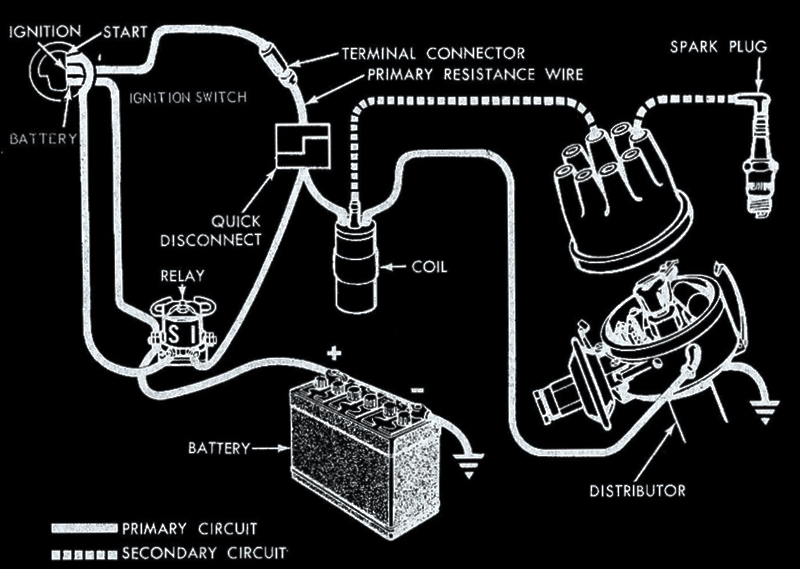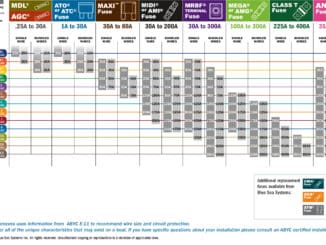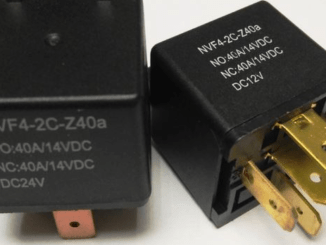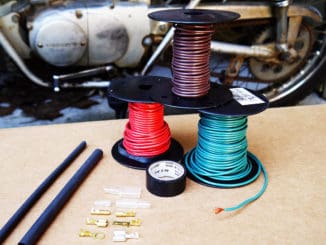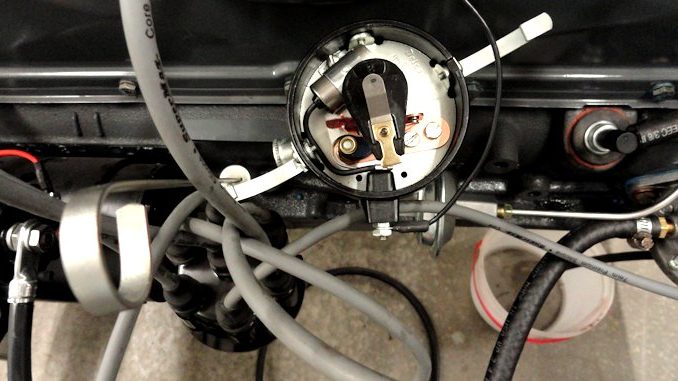
Distributors are an important part of the ignition system in an internal combustion engine. They are a device that routes the high voltage into the correct firing order to the spark plugs. Both magnetos and battery ignitions have distributors.
The distributor consists of a rotating arm, otherwise known as a rotor. The rotor is inside the distributor cap and on top of the distributor shaft. The rotating shaft is timed with the crankshaft via the camshaft or gear, that turns the rotor.
The rotor contacts the central high voltage cable from the coil via a spring-loaded carbon brush. The rotor arm then passes close to the output contacts, which then connect via the high tension cables to the spark plug of each of the cylinders, but it does not touch them.
So the rotor makes and breaks contact with the spark plug wires via the distributor cap. In the distributor, there is high voltage energy that is able to jump the small gap from the rotor arm to the contact. The same shaft opens and closes the points.
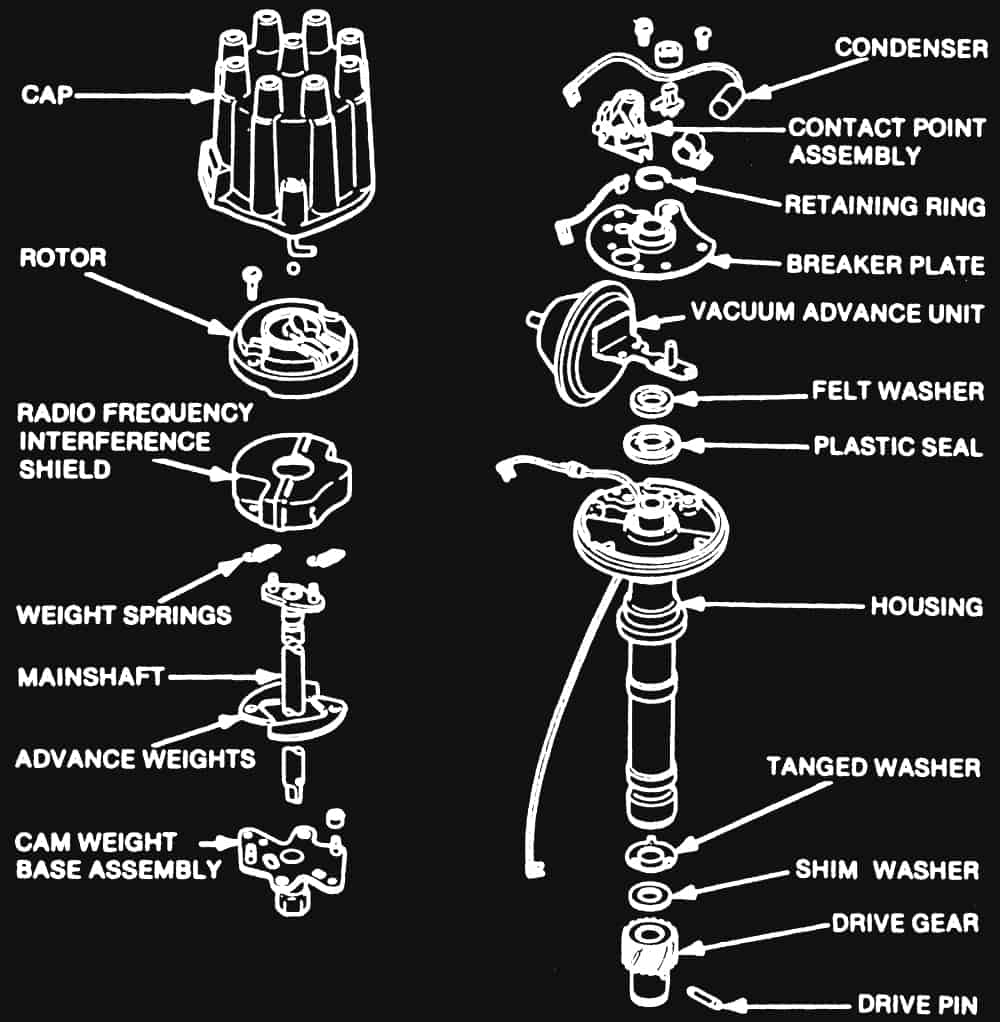
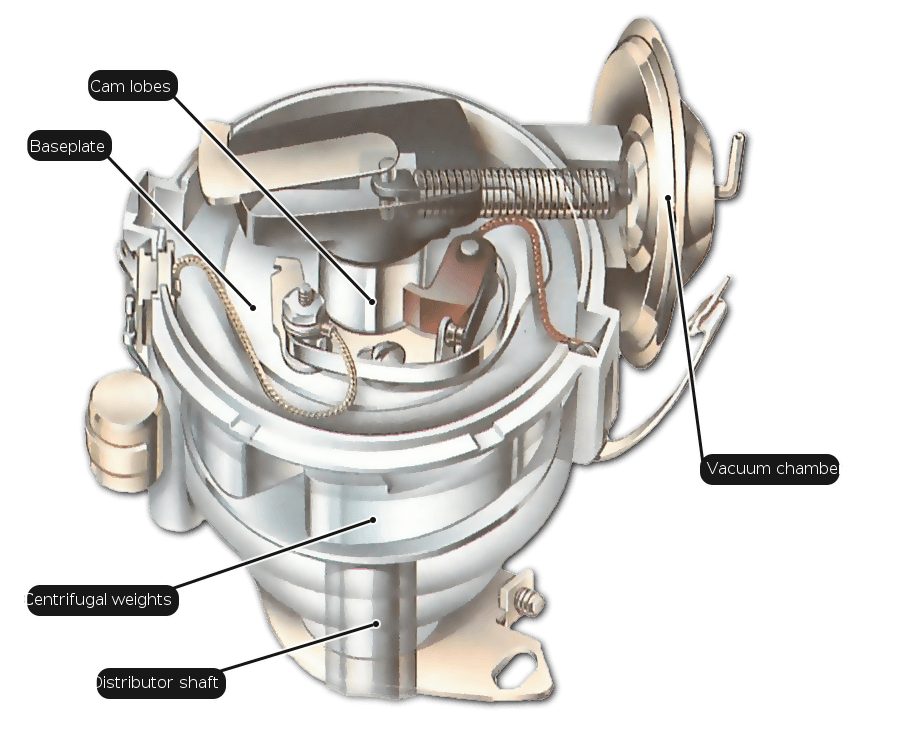
The distributor shaft has a cam (a projecting part of a rotating wheel or shaft that strikes a lever at one or more points on its circular path) that will operate the contact breaker. Opening the points will cause a high induction voltage in the system’s ignition coil.
The distributor also houses the centrifugal advance unit:
This is a set of hinged weights that are attached to the distributor shaft. It will cause the breaker point mounting plate to slightly rotate and then advance the spark timing with higher engine RPMs.
The distributor also has a vacuum advance unit that will advance the timing even further as a function of the vacuum in the inlet manifold.
There is usually a capacitor (a device that stores energy in the electric field), which is attached to the distributor. You will find that the capacitor is connected parallel to the breaker points. This is to suppress sparking and prevent any wear of the points.
Sometime around the 1970s, Hall effect sensors largely made breaker points obsolete. And because this is a non-contacting device and solid-state electronics primarily control the circuit, they eliminated a huge amount of maintenance in point adjustment and replacement.
This will now also eliminate any problems with the breaker follower or any cam wear. Therefore, eliminating a sideload will extend the life of the distributor shaft bearing (a component used to reduce friction in a machine).
